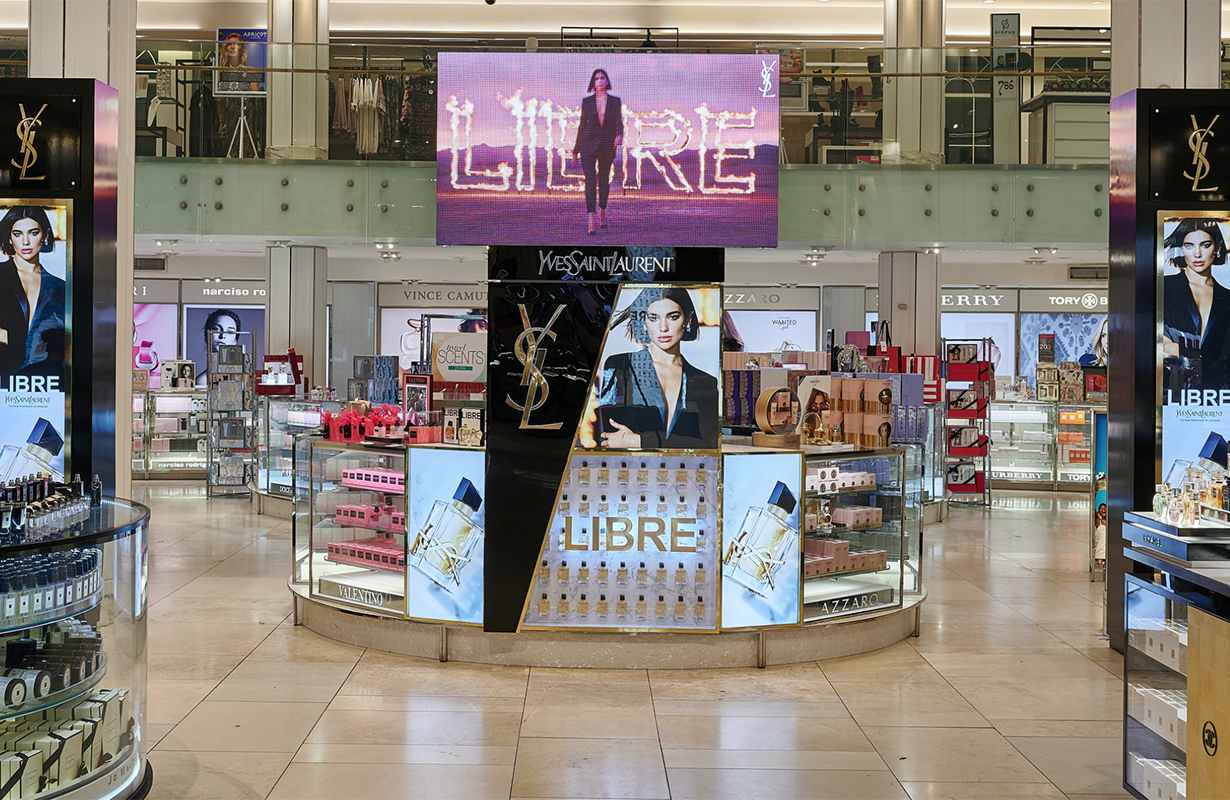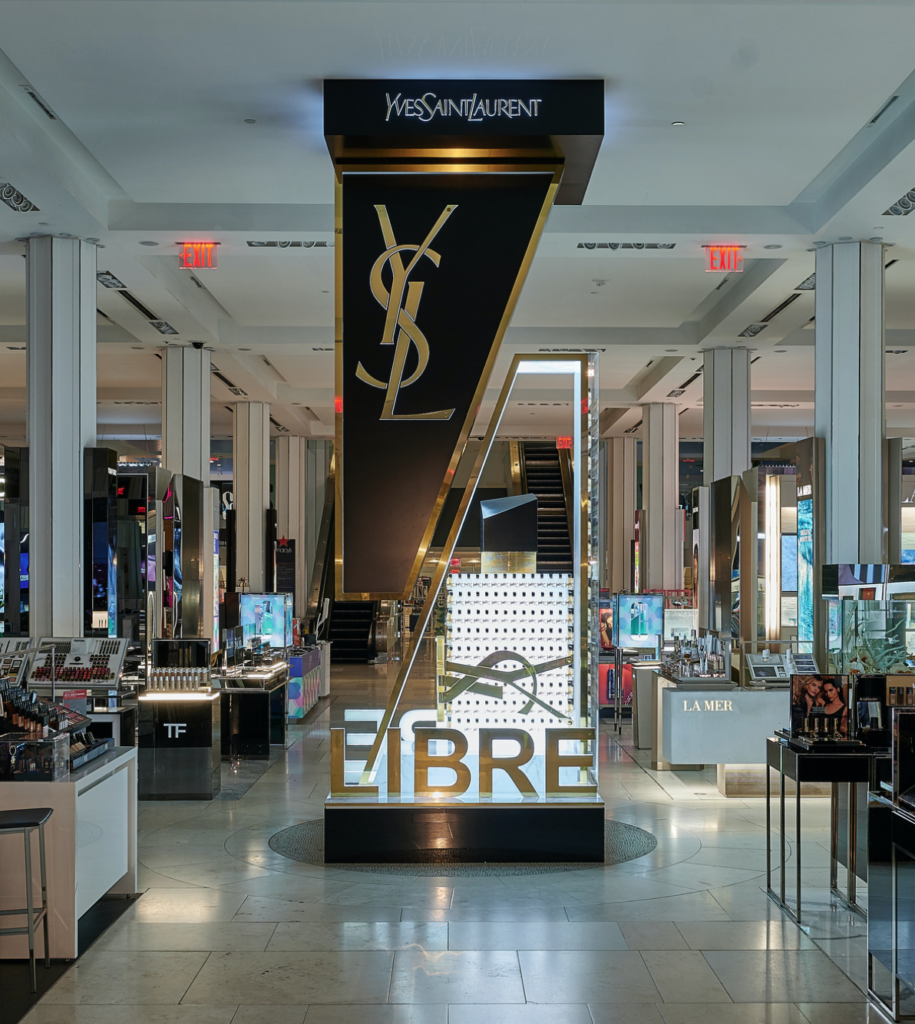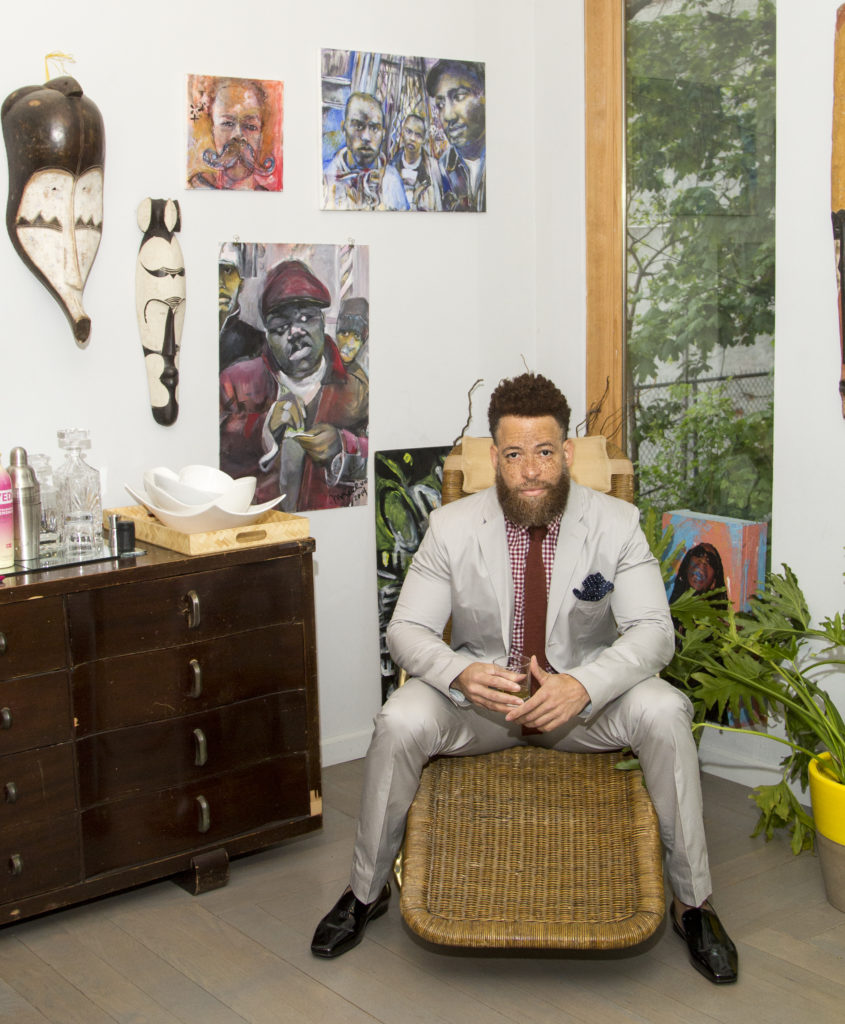

by Jonathan Vatner
Way back in early February, when COVID-19 was still a distant concern for most Americans, Sean Jackson, U.S. creative director for YSL Beauté, designed a pop-up shop for the Coachella Valley Music and Arts Festival, selling cosmetics and fragrances from the designer beauty brand. “We were ready to pull the trigger, pencils down,” Jackson says, “when we got an email from the general manager, saying it looks like we are probably not doing Coachella.”
The Coachella pop-up was the first of Jackson’s projects to be canceled. After two projects at Sephora were nixed because of the coronavirus, “it occurred to me that this was about to impact the U.S. in a serious way.”
The Packaging Design alumnus oversees packaging, department store displays, advertisements, and all other graphical elements for YSL Beauté’s United States presence. He works from a tightly controlled set of design codes handed down from the headquarters in Paris. For store displays, that means incorporating elegantly veined Carrara marble, glossy black lacquer, and an oversized YSL logo, known as the Cassandre, named after the graphic designer who created it. Packaging must communicate a similar clean, refined aesthetic, using coated paper, as plastic has been phased out as part of the brand’s sustainability push.

As COVID-19 spread in the U.S., more store launches and updates were postponed or canceled, and all of Jackson’s projects were at risk. He began working from home, and his apartment became an impromptu warehouse and photo studio as he collected samples and presented them virtually to management. Budgets were slashed, too; at Sephora, three planned display updates were condensed into one October refresh that will have to cater to holiday shoppers as well. Launches scheduled for fall 2020 were pushed back to spring or summer of 2021.
Now that stores have begun to reopen, Jackson must create arresting displays in a smaller footprint, to allow for social distancing. For a Macy’s holiday fragrance display, his footprint was reduced from 5 by 5 feet to 3 by 3 feet. The number of towers holding product was reduced, too.
Cosmetics testers are evolving, too, to allay fears of transmitting the virus through touch. For example, some stores are experimenting with virtual makeup testing stations. Customers point their camera to a QR code on the display to virtually try on the makeup using their phone. In most stores, however, traditional testers are still in place for customers who still want to touch the product.

Despite the unprecedented challenges of this year, Jackson is confident that stores will eventually rise again, and that high-impact display design will continue to be relevant.
“As much as people love to shop online and are going to be nervous going back into stores, people are starving to get back to the things they used to do,” he says.